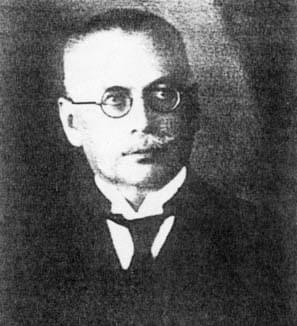Ladislaus Bortkiewicz was born in Saint Petersburg, Imperial Russia, to two ethnic Polish parents: Józef Bortkiewicz and Helena Bortkiewicz (née Rokicka). His father was a Polish nobleman who served in the Russian Imperial Army.
Bortkiewicz graduated from the Law Faculty in 1890. In 1898 he published a book about the Poisson distribution, titled The Law of Small Numbers. [ 1 ] In this book he first noted that events with low frequency in a large population follow a Poisson distribution even when the probabilities of the events varied. It was that book that made the Prussian horse-kicking data famous. The data gave the number of soldiers killed by being kicked by a horse each year in each of 14 cavalry corps over a 20-year period. Bortkiewicz showed that those numbers followed a Poisson distribution. The book also examined data on child-suicides. Some [ 2 ] have suggested that the Poisson distribution should have been named the “Bortkiewicz distribution.”
In political economy, Bortkiewicz is important for his analysis of Karl Marx’s reproduction schema in the last two volumes of Capital. Bortkiewicz identified a transformation problem in Marx’s work. Making use of Dmitriev’s analysis of Ricardo, Bortkiewicz proved that the data used by Marx was sufficient to calculate the general profit rate and relative prices. Though Marx’s transformation procedure was not correct—because it did not calculate prices and profit rate simultaneously, but sequentially—Bortkiewicz has shown that it is possible to get the correct results using the Marxian framework, i.e. using the Marxian variables constant capital and variable capital it is possible to obtain the profit rate and the relative prices in a three-sector model. This “correction of the Marxian system” has been the great contribution of Bortkiewicz to classical and Marxian economics but it was completely unnoticed until Paul Sweezy’s 1942 book “Theory of Capital ist Development”
